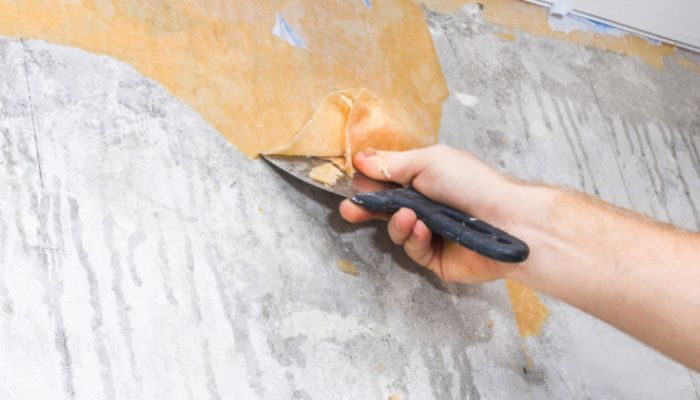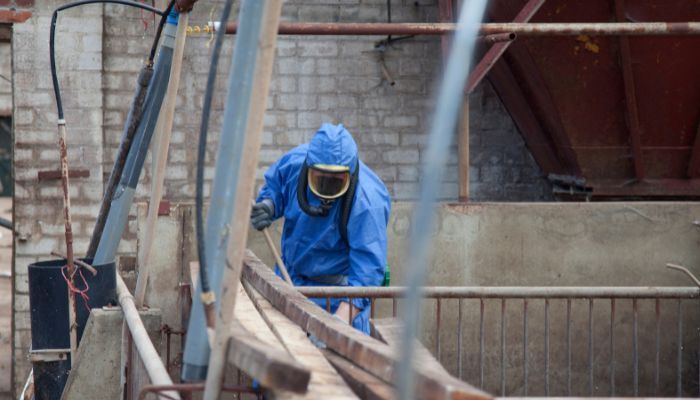
Removing Lead Paint from Your Home: How to Go About It?
Lead-based paint can be a serious health hazard, especially deteriorating paint. If you happen to find lead paint in your home, your initial instinct may be to remove it immediately. However, even though you may have lead paint in your home, there may still be no health risks. Additionally, you can be safe from contamination by enclosing any paint that is still in good condition and repainting. The real risk is when lead paint is flaking or otherwise decaying, which can result in the inhalation of lead dust or the ingestion of lead-based paint chips, which are very toxic.
If you wonder how to remove lead paint safely, there are a few ways to do so. Stay with us as we will further explain how to remove lead-based paint.
Why Should You Remove Lead Paint?
At one point, lead was a metal that was used in practically every industry. It was found anywhere from our plates to plumbing pipes and fuel. Most importantly, lead-based pigments have been used in paint pigment for hundreds of years. The usage of lead persisted well into the 1970s, and lead-based paint was used to paint practically every house constructed before 1950.
However, it was discovered that if you don’t take precautions when removing lead-based paint from a building’s interior or exterior, you could get lead poisoning, the consequences of which can be severe. Lead poisoning, if untreated, can harm the brain, cause anemia and kidney damage, and even be deadly to both kids and adults. Children are particularly susceptible, as while playing, they may ingest lead paint chips.
This is why it’s important to remove the lead paint or treat it accordingly to avoid any potential damage to your health.
How to Remove Lead Paint?
Encapsulation: The answer to how to remove lead paint most simply and least expensively is via encapsulation. It entails applying a specially formulated paint-like covering by sweeping or spreading it. This coating forms a waterproof seal and locks in lead-based paint. Opening and shutting your doors and windows can ultimately cause the coating to disappear.
Enclosure: By using this technique, the old surface is replaced with a fresh one, for instance, by installing fresh drywall or sheathing made from aluminum or acrylic.
Removal: Lead-based paints can be removed using different methods, like wire brushing or wet hand scraping using liquid removers for paint. If you choose wet sanding, you must use an electric sander with a high-efficiency particle air (HEPA) filtered vacuum.
Replacement: This approach entails removing the problematic elements and replacing them with new windows, doorways, furniture, and other surfaces.
Other ways to remove lead paint!
Using containment, protection, dust reduction, and cleanup strategies is a safe way to remove lead paint from your home. These are the same methods that the EPA advises specialists to use.
Containment: Enclose the space where you’ll be working with an air-tight barrier. You wouldn’t want dust to exit the work area and settle in other clean rooms.
Protection: Anybody removing lead paint on the job site must be wearing full safety equipment.
Dust regulation: When lead paint has been scraped, water misted plastic container helps to confine the dust.
Cleaning: A HEPA vacuum, which is normally found at a rental yard, is recommended to be used to clear up the work. Don’t use a vacuum in your house. Everyone who has been around the area should clean up and either wash or discard any protective equipment after the project is finished.
Can a Homeowner Remove Lead Paint?
The homeowner can remove lead pain by taking safety precautions at all times, like covering the hair and putting on overall and gloves. Also, wearing a respirator with a HEPA filter or a least an FFP3 dust mask is recommended.
Remove anything from the room before beginning to remove the paint, paying extra attention to soft furniture, drapes, and carpets. Avoid generating dirt or fumes as a general rule. To lessen the risk of breathing dust, use a chemical remover to attach the particles and dampen your working area.
Maintain good ventilation while working, and keep others out of the area. Don’t peel any paint that is still in good shape! To protect the lead paint, simply paint over it. As soon as you can, put the stripped paint in bags and tape them shut.
Can I Remove Lead Paint Myself?
You can remove lead pain by yourself if you follow the steps below.
Step 1: Completely clear the space: Take away all household goods, plumbing, and furniture from your operating space. By doing this, you won’t expose them to lead particles. Switch off all heating and ventilation, systems and shut all windows.
Step 2: Wear something protective: Wrap the entire floor, entrance, air ducts, stoves, and other surfaces with heavy plastic tarps. Make sure there are no holes in the plastic sheeting by taping it down with duct tape.
Step 3: Wear the appropriate safety gear: This is a crucial stage in the removal of lead paint properly. A half-face respirator with an authorized HEPA filter is among the necessary safety gear that you must wear. Baggy sweats, disposable overshoes, latex gloves, safety goggles, and a cap should all be worn.
Step 4: Water-spray the area: To reduce the possibility of tiny lead particles flying about, keep a bucket of warm water nearby, together with sponges or cloths, for mopping surfaces. Spray areas of cracked or flaking paint with a spray bottle containing water.
Step 5: Use a hand scraper to remove flaking paint: Wipe off any flaking or deteriorating paint. You are not required to remove all lead paint because you’ll subsequently paint over it using lead-free paint.
Step 6: Sand any rough areas smooth: Rinse the surface once more to make sure it is moist, and use a sanding cloth to smooth off any rough edges left by scraping. Once you’re finished, carefully sweep the area with a wet sponge to remove any lead-filled dust.
Step 7: Paint over the wall: You may paint over the wall using lead-free paint if the lead paint is in good shape and you’ve handled any peeling or deterioration.
Step 8: Completely vacuum your workspace using a different, approved HEPA vacuum: Even if it has a HEPA filter, avoid using a regular household vacuum to clean up your workspace because it could spread lead particles into the air.
Step 9: Gently remove and discard the plastic sheeting that served as protection: To collect any remaining lead particles that have not been vacuumed up, wrap the plastic covering inward. The sheets should then be rolled up and put in a rubbish bag.
Step 10: Clean the area: Wash the area with lead-filled particles carefully while using your protective gear. For this stage, use warm water, an all-purpose cleaner, and a disposable cloth.
Removing lead paint can be a dangerous process overburdened with different solutions and risks. As a result, a lot of people ask for help from professional services like the expert team at Steamy Concepts, who are specialists in lead and paint removal. Our staff members are trained to provide you and your house with only the greatest customer service, both on the field and in the office. Don’t hesitate to reach out!
FAQ
Is stripping lead paint dangerous?
Yes. If proper safety measures aren’t taken, lead paint particles could get airborne and end up in someone’s mouth, eyes, or nose. They can also leak into the carpeting, flooring, furniture, and air conditioners or endanger your family’s health.
Should you remove lead paint or paint over it?
It is recommended that you should remove lead paint and no longer paint over the lead paint. The application of fresh paint, this method will cause the existing paint to peel and flake. You must stop the emission of lead dust right away if the house begins to exhibit paint failure symptoms, such as peeling and scorching.
Is lead paint difficult to remove?
Lead paint removal is considered a difficult task for the average homeowner attempting a do-it-yourself effort. This job requires specialized materials and equipment in addition to specialist training to be completed properly and safely.
What happens if you scrape off lead paint?
If you scrape off lead paint, it can be extremely dangerous. These activities disperse tiny lead dust into the air. The greatest danger of lead exposure is for infants and young children living in homes built before 1960 (when lead-based paint was frequently used).
Table of Contents
Other Blogs You May Be Interested In












